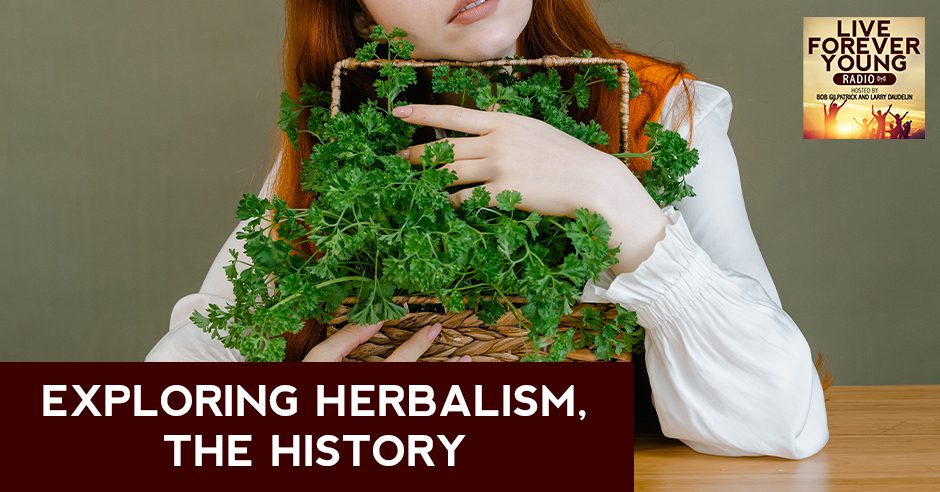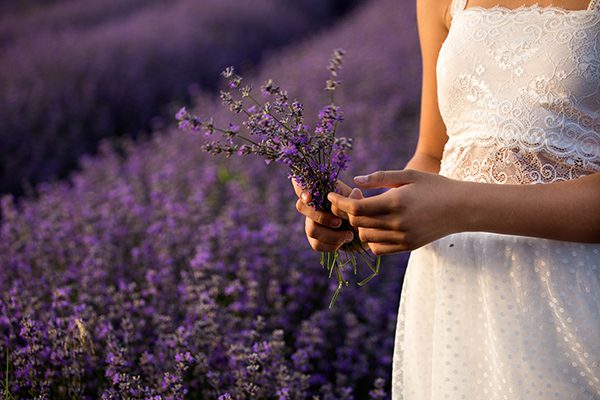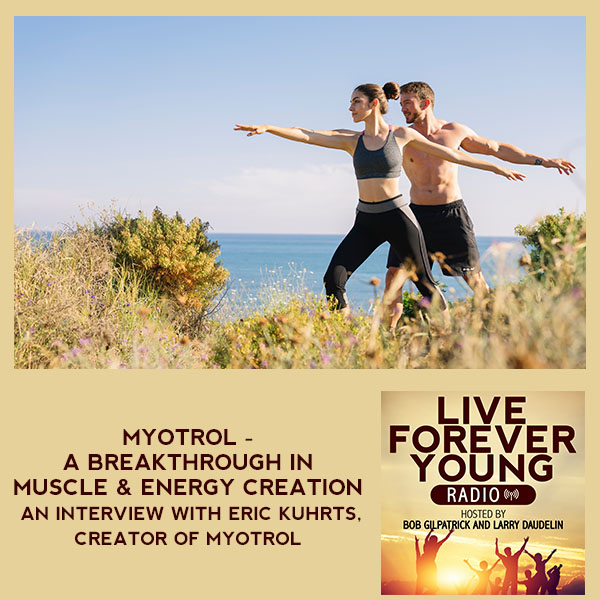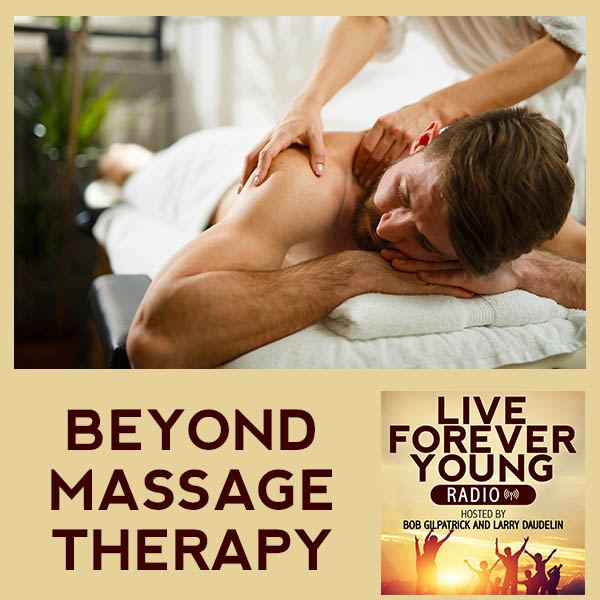
Herbalism is the basis for modern-day medicine and has a long history. Today, we will introduce the history of Herbalism as the first episode of our series called “Exploring Herbalism.” Bob Gilpatrick and Rollie Culp go over the History of Herbalism from its start 60,000 years ago to its modern-day incarnation. Medical science had slowly developed from then on but still looked at old herbal medicine as a reference. They also discuss how the new technologies allow scientists to make ancient herbs and how they extract the necessary components on the medicinal plants or trees. So sit back, relax, and get ready to live forever young.
—
Watch the podcast here
Listen to the podcast here
Exploring Herbalism, The History
Episode 1 In Our New Series
Herbalism is the basis for modern-day medicine and has a long history. On the show, we will introduce the history of herbalism as our first episode in our series called Exploring Herbalism. Bob and Rollie go over the history of herbalism from its start, 60,000 years ago, to its modern-day incarnation. They also discuss what new technologies of the day allow scientists to do to make ancient herbs even more beneficial for our health. Sit back, relax and get ready to live forever young.
—
In this episode, we’re going to talk about our series that we’re putting together about herbs and herbalism. We’re going to talk a little bit about the history of herbs, what we know from times gone by and how it brings it up to the modern-day. In the next episode after this, we’ll take one particular herb that had a lot of research done on it. We’ll talk about all the different aspects of it, how it’s prepared, how it gets put together with other things and what the benefits are. We know going back with archaeological digs back as far as 60,000 years ago, it looked like that you had ancient history showing that humans were carrying herbs in satchels and they were in the archeological mix.
A lot of the places where they found plants in those types of situations and satchels and what looked like for either ceremonial or maybe medicinal uses, they found them at burial grounds. When they found burial grounds, there were lots of herbs and spices. Maybe it could have been to help with the smell but a lot of them also could have been there as the initial first try at medicinal herb plants.
That was the earliest back. There’s nothing written or documented until you go to Mesopotamian. This was about 5,000 years ago. In Mesopotamia, when we were doing research, they found some Sumerian tablets that had some of the first written records as plants being used as medicine. There were plants and what they helped with.
That’s pretty weird because when you think back 5,000 years ago, they were right around the same time as the Egyptians. The Egyptians are using papyrus, which is paper. A lot of the things that they found that were Egyptian, people couldn’t read. They have some stuff that says there are plants here and they can make out some of the elements, but they couldn’t read all of it. That’s right around the same time you had those two.
Drinking tea from the basswood could act as a sedative. It would calm you down. Share on XWe have Ayurvedic medicine, which goes back some 4,000 years, which was originally in India.
It’s getting more popular here in America as we learn more about it.
They had records of different plants that were used for various ailments way back then. In the modern-day, it’s much more well-documented as to what helps with what and their actual chemical actions are.
That was some of the first real experimenting done back with Ayurvedic because you’re using what you can find and see what it works for. After India, it was China. China is well-known for its medicine being based on herbalism.
China goes back about the same amount of time as Ayurvedic medicine.
That was about 4,000 years ago.
When you get up into the Bronze Age, a lot of the ancient writings started to be interpreted and converted into Latin by the Benedictine monks. They started translating the Greek documents, “This plant will help with this.” They translated it into Latin and ended up becoming the physicians of the day.
We were talking about that because they were the ones who did all the translating, so they were the ones who were reading the medical stuff. I don’t know if they know how to do it, but they know what to tell people to do.
They were drawing pictures of the plants and creating these little encyclopedias. It kept on going from there. You got into the sixteenth century. It was the first time they made one in English. It kept going when the explorers started to come over to America. There was a whole body of knowledge that the Indians had about herbalism. They used the different herbs that were in different regions of North America and South America.
I took a class at Northeastern University one time in 1980. It was a course in herbs and using herbs for helping with things. The teacher had a Master’s degree in Medicinal Chemistry. He would teach in the classroom before we would go out into the field. He would show us a diagram and say, “Here’s the active ingredient that’s in this compound right here.” He would draw the chemical structure and say, “The way that it helped was it interacted in the body like this.” He is being a medicinal chemist. He goes, “My friend from the West, who was an old Indian herb doctor, confirmed it. That works for this.”

Herbalism: There are actually three different types when talking about Herbalism here: herbs, spice, and food.
He is doing all the scientific research and then he is making sure to double-check with the tradition to make sure, “I’m on the right track.”
He would then take us out into the field. We would go to these streams, rivers and out into the woods and he shows us all the different plants. I remember him telling the story about a plant called jewelweed. Jewelweed usually grows next to the water. It also grows in the same area where the poison ivy grows because jewelweed is an antidote to poison ivy.
He showed us how to find jewelweed and how to prepare it. He would pull the whole plant, including the roots with the dirt still on it. You would put that plant into a pot of water and boil it for five minutes. You could add it to your bathwater and soak in the bath or take the water and rub it over your body where you’d gotten the poison ivy and it would help with your poison ivy.
It was also a good preventative. If you’re going out into the woods, you could rub your body with this water and you could freeze it. You can put it in the freezer on an ice cream stick. It looked dark colored because of the muddy water, so you knew it from the regular ice cream. You rub it onto your body and it would help. You can drink jewelweed too. In fact, you would make tea. What you would do is without the muddy part of the root, you could take a part of the jewelweed and boil it. You make that your tea and drink it. You wanted the extract from the root as well, you would use the rest to rub onto your body.
They also told us the story about goats and how goats love poison ivy. You need different herbs for humans versus animals because goats have a whole different enzyme system and poison ivy acts like catnip. It makes them high. Goats will eat all the poison ivy first on the farm. If you milked the goats that ate the poison ivy and drink it, you yourself would become immune to that type of poison ivy that’s growing in there.
They should make poison ivy milk. They would give it to everybody who lives near the woods and they’ll never get poison ivy again.
There are 300 different types of poison ivy. Some people say, “I’m not allergic to poison ivy.” A different kind in West Virginia is not the kind in New York. Jewelweed was a major herb. You can make anything from it. He also taught us about the herb that’s a flower that grows on a plant called the basswood tree. It’s an American basswood tree, which is a little different than the European basswood.
Each plant has its own parts that can be utilized. Share on XIn June, around New York and Massachusetts, they would flower. You could pick the flowers and use them as an herb. You could put it in your bath water and it would be an exfoliant. It would take the top-layer skin off your body and your skin would become very soft. You could also drink tea from the basswood and it acted as a sedative. It would calm you down.
People would make these little sachets. They would hang it underneath the faucet for the bath and run their bath water through it. It would make their bathwater like a diluted tea. They would then make some strong tea with the basswood flower. They would soak in the bathtub, drink their tea, chill out and get exfoliated at the same time.
It’s like a whole skin rejuvenation system. All it is is one natural plant.
That was talked about also in a book about herbs that was called Stalking The Healthful Herbs. The author was Euell Gibbons, a famous herbalist, who wrote other books too about wild edibles. He wrote a book called Stalking The Wild Asparagus. The course that I took at Northeastern was about both the herbal aspect and the food aspect as well of plants that you could collect in the wild to eat as food.
That’s funny because you were talking about eating this food. Not only do you have herbs but you were saying there were three different types when you were talking about herbalism here.
It’s not a type of herbs, but it’s herbs and then you have spices. You also have food. Typically, spices would be things like turmeric. Turmeric is a spice they use in India. Turmeric, because of the active ingredient curcumin, is also an herb that can be used for many different things for medicinal purposes. We will talk all about that in a separate episode. It can be both a spice and an herb.
The food itself, there are people who wouldn’t necessarily think as an herb that you’re going to use for medicinal purposes, but quite often, food can act medicinally. For example, if you’re constipated, you’re going to be pretty sick, but consuming foods with more fiber can help your constipation. It’s not typically what someone would think of as an herb to consume more fibrous foods, but it did act medicinally.
Food is medicine as opposed to a specific herb.
The plants have different parts to them as well. Some have different active ingredients in the flower than they do in the root, rhizome and leaves. With the turmeric, that plant has leaves as well that you can eat, but if you’re looking to get the part that has the curcumin, you want to get the root. The rhizome is the part that grows horizontally. Coming off of that rhizome are the little root hairs. The roots have curcumin also, but it’s different than the curcumin in the rhizome. When the rhizome comes up, it becomes a stalk and partway up the stalk, you also have the orange color there that has the curcumin in it.

Herbalism: If you can’t get the nutrients to where they need to go to the body, it’s not going to help.
Each plant has its own parts to it that can be utilized. Certain trees, the bark like the elm tree, are very valuable and bark from certain trees from which you can make cinnamon. There are other trees where you’re not going to use the bark. For example, the leaves of a willow tree have properties like aspirin. Leaves of smaller plants like plantain have antioxidant effects. You can rub plantain leaves onto an effective cut.
These are all plants. Some are used for medicinal purposes and you would call them herbs. Some are used for flavoring your food and you would call them spices. For example, saffron. Saffron, which is a spice, we know it’s good for your eyes so it’s also an herb. In modern-day herbalism, we’re very fortunate because of new technology that enables us to say, “What is in these plants that seems to be helping with X, Y or Z?” We’re able to identify what the bioactive compound is that’s beneficial.
We were talking about the new technology and their ability to make new techniques that make it easier to identify those things.
Not only that, but identify whether they exist in the plant’s cell independently or bound to something else. We have the ability to extract out the specific bioactive compound from the plant. There are much better methods for extracting than they used to be. It used to take a lot of complications with heat, steam, boiling, and solvents to get things out. It wasn’t as good.
They have light issues and different other technologies that can separate the bioactive compounds out. People will ask us quite often, “Are your products all-natural?” The answer is, “Yes, some of them are and no, some of them are not.” The reason is as soon as you use an extraction process to get something like curcumin from the turmeric, it’s no longer considered all-natural, even though curcumin is naturally occurring in the turmeric plant.
Even if it comes from a natural source, it’s that process of extracting the good stuff that makes it considered not all-natural.
It’s not that it’s going to hurt you. It’s just not technically all-natural.
You would have to eat 1 million pounds of turmeric, though, if you didn’t do it that way.
Even if it comes from a natural source, it's that process of extracting the good stuff that makes it considered not all-natural. Share on XThe other thing is that you have new delivery methods where people can have essential oils, tinctures, powders and pills, all different ways people can get it. You have gummies. People will put the compound in chocolate. The other part is absorption. First off, you want to tend to your absorption capability by making sure your villi and small intestine are clean and capable. You also want to make sure that the product you’re taking in is an absorbable form. We can combine bioactive compounds with other compounds that your cell will much more readily absorb with new technologies. It acts as a shuttle to get the bioactive compound into the cell.
It’s important how much you take of something but what’s more important is how much of what you’re taking is absorbed into the cell so it can get used because if it’s not getting there, it’s not going to do any good. It’s like with any nutritional supplement. If you can’t get the nutrients to where they need to go to the body, cells or wherever it needs to go, it’s not going to help.
Some absorption can’t cross the different barriers in your body. It has all different barriers, including the blood-brain barrier. For you to get potential benefits to your brain, you have to have compounds that can cross the blood-brain barrier. This is modern herbalism. We’ll talk more about that as we get into the next parts of the series that we’re going to do. When we talk about each of the different herbs, we’ll also talk about what they’re combined with.
For example, if you can take the bioactive compound resveratrol and combine it with another bioactive compound that comes from a different part of the same plant, quercetin, the two combined together have an action that you would never get by 1 of the 2 alone. It has become a science of absorption, extraction, combinations and very specific amounts in different ratios to make sure that your body gets the maximum benefit. We’ll go over that with different herbs. We’ll go into those things with each of those.
We’ll be covering more than a couple of different ones because some of the things we have to offer are based strictly on this idea. Even some of the things that we don’t carry are stuff we’re going to go over because some of the best things that you can take come from Mother Earth. A lot of the things have been around for 60,000 years. People have been using herbs as medicine. Something is right about it. We’re going to keep delving into it and going over the different things that we know about each individual one. We hope you’ll join us for it.
Rollie, thank you. I’m looking forward to the rest of the series. Thank you, everyone, for reading. We’ll see you in the next episode.






